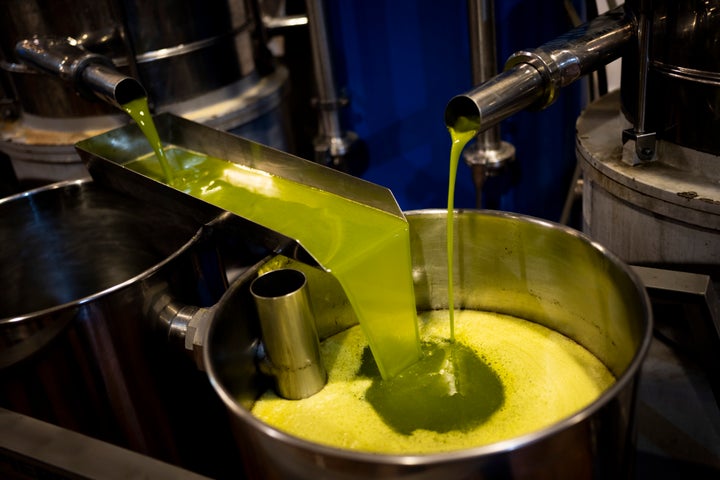
Given how pricey olive oil has gotten, you probably want to ensure you’re getting the best out of the liquid gold (well, okay, golden liquid).
That might mean storing it correctly, buying the fanciest stuff at the right time of year or moving the bottle’s security tag just far enough over its label to see if you’re buying “virgin” or “extra-virgin” olive oil.
The more “virgin” our olive oil is, the pricier it tends to be. But we can’t be alone in wondering what exactly that so-called “virginity” refers to, can we?
It has to do with how the olives are processed
The International Olive Oil Council (IOC), a UN-chartered organisation, decides which categories different olive oils belong to.
Founded in 1956, the IOC defines “virgin” and “extra-virgin” olive oils as those which are extracted “solely by mechanical or other physical means under conditions, particularly thermal conditions, that do not lead to alterations in the oil”.
In other words, they’re not heated or extracted with any solvents.
The only treatments “virgin” olive oils can go through aside from pressing, grinding, crushing or milling are washing, decantation, centrifugation and filtration.
Once an oil passes those qualifications, it’s graded as either “virgin” or “extra virgin” depending on its taste, free acidity and quality.
“Extra virgin” olive oil tastes quite fruity, has a “free acidity” level of up to 0.8g per 100g and is free from “impurities” that affect its taste.
“Virgin” olive oil has to have a free acidity level of 0.9g up to 3.3g per 100g.
What is ‘free acidity?’
The “free acidity” of olive oil refers to its free oleic acid content, which can be confusing as oleic acid is responsible for a lot of the benefits and taste we associate with good olive oil.
But speaking to olive oil company Bertolli, Paul Miller, olive oil expert and the former president of the Australian Olive Association, explained that “free acidity” refers to the amount of broken fatty chains in the oil.
“Extra virgin olive oil is mostly liquid fat — hence the name oil — and that fat is made up of triglycerides, which literally means molecules with ‘three fatty acids.’ The good monounsaturated fat is called oleic acid,” he shared.
But “when any food oil is extracted, there’s always a bit of damage in the process. With olive oil, that damage is known as hydrolysis —when the good fats are attacked by water and enzyme,” he said.
“Those enzymes break some of the fatty acids off the triglycerides, and they become free acids or free fatty acids.”
That means the higher the free oleic acid content, the less intact oleic acid (an omega-9 fatty acid) there is.
“Simply stated, a low level of free fatty acids is an indicator of better olive oil,” Bertolli says.